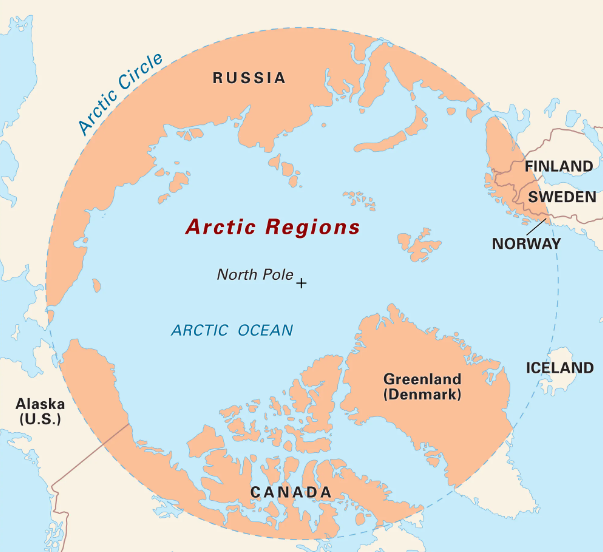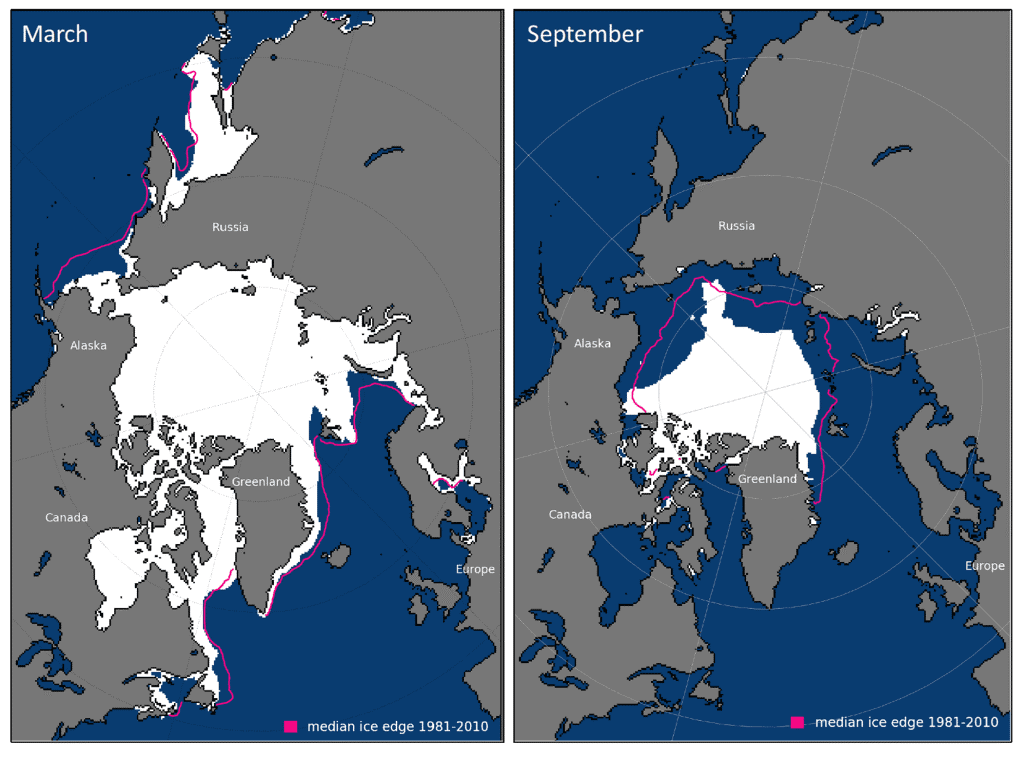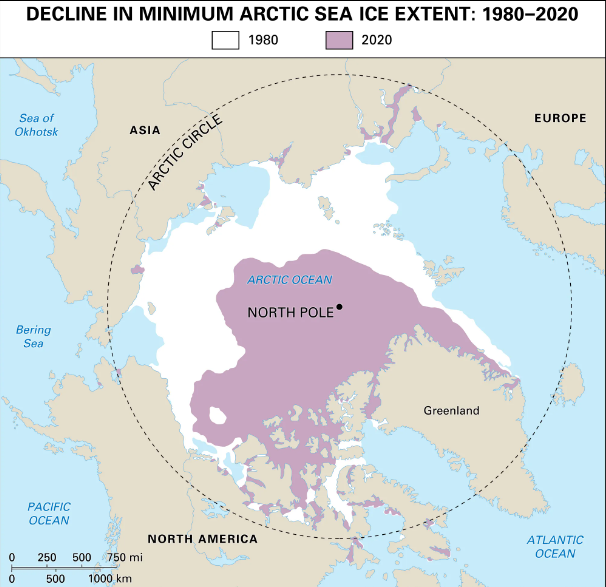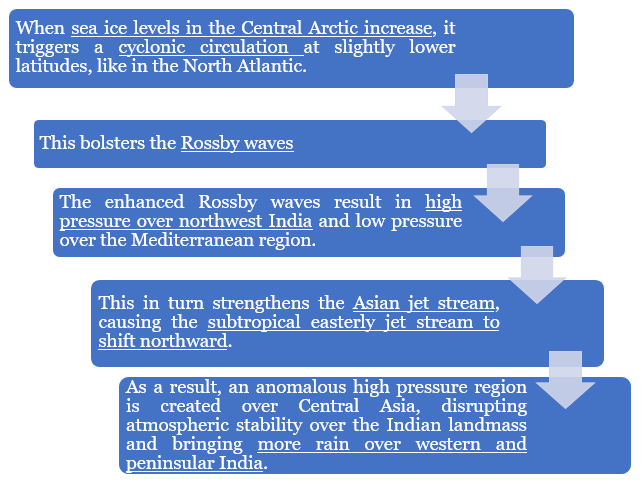New research reveals that changing Arctic Sea level has significant impact on monsoon patterns.

Arctic Circle is the line of latitude around Earth, at approximately 66°30′ N.


Barents-Kara Sea region encompassing the Hudson Bay, the Gulf of St. Lawrence and the Sea of Okhotsk.
The circum-global teleconnection (CGT), a large-scale atmospheric wave flowing at the mid-latitudes, seemed to significantly influence the monsoon as well.
To know more about Monsoon, Click here
Rossby waves are fast-flowing streams of air high in the atmosphere created by the earth’s rotation and differences in temperature and weather systems that move west to east.
The Subtropical Easterly Jet Stream (STEJ) is a high-altitude wind pattern that flows from east to west over the Indian subcontinent during the summer months.
